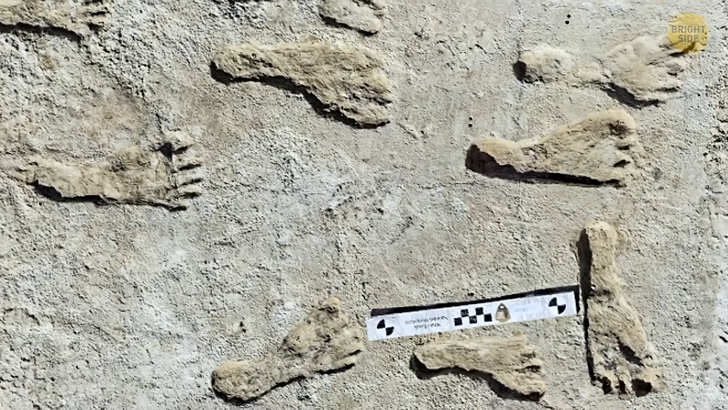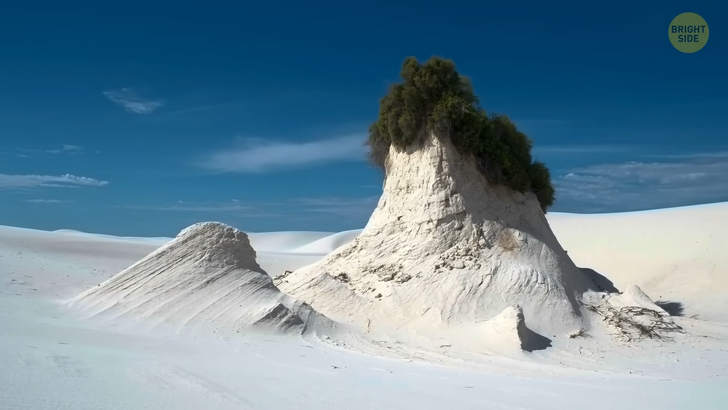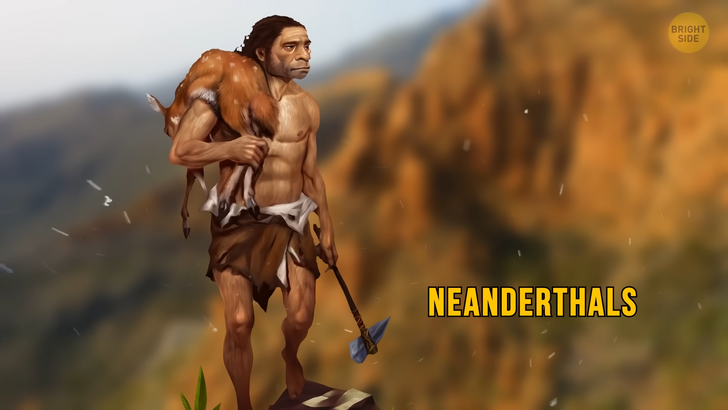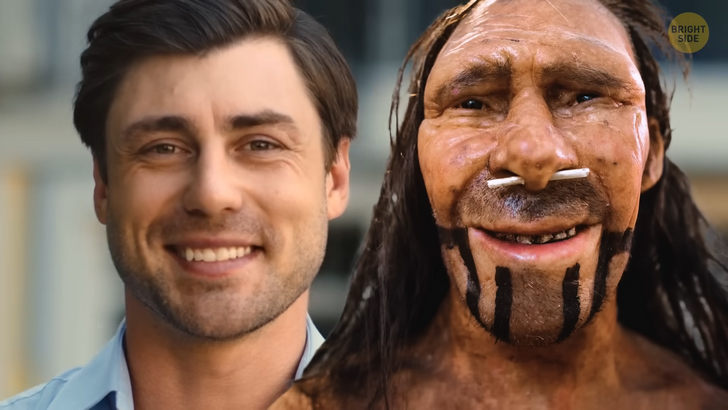Men and Women Have Very Different Ideas About Ideal Lip Size, According to Studies

White Sands National Park in southern New Mexico attracts plenty of people with its endless chalk-colored dunes. Tourists leave their traces behind. Some of those traces, although they look crispy clear and new, are slightly older than others. Between 21,000 and 23,000 years old, to be precise.
Scientists found around 60 fossilized footprints in layers of gypsum soil. They are the oldest evidence of human presence in North America. There has been a nearly century-long debate on when the first humans populated this area. Most researchers believed it was not earlier than 13,000 years ago.

The newly-found traces not only prove it was several thousand years earlier but also tell us what challenges the ancient humans had to overcome. The first people may have arrived here back in the times of the Ice Age’s glaciers. Back then, the region was wetter and grassier. It looked more like the present prairies of the Midwest rather than New Mexico’s deserts.
Mammoths lived on the muddy shores of shallow lakes that changed their size with the seasons. Mammoths weren’t the only giants here. Back in the early 1930s, an animal control inspector found a big print that, he believed, belonged to the mythical Bigfoot itself. It turned out the footprint belonged to a giant sloth.
Ever since that case, researchers have managed to find thousands of tracks in the national park. Those tracks prove that ancient humans lived alongside those giant sloths and mammoths back in the Ice Age. As the temperatures in the region went up, rain and melting snow brought gypsum from the surrounding mountains.

Ancient Lake Otero, the center of life, dried up around 10,000 years ago. Selenite crystals formed in its place. Strong winds broke up those crystals and took them eastward. Gypsum sand is still formed here in a similar way. The winds expose some of the prints left in this terrain, and you can only see others with a trained eye as they’re hidden beneath the sand. In 2018, researchers found what they thought to be the footprints of a female. She was walking for almost a mile, with smaller footprints of her offspring occasionally popping up next to her. Analyzing the footprints can tell a lot about the lifestyle of the person who left them.
It’s really tricky to establish an exact time when the traces were left at White Sands. Even traces found close to each other could date to periods thousands of years apart because of the terrain type. To find the correct date, researchers look for layers of seeds that can undergo a special kind of analysis for prehistoric samples below and above layers of footprints. For years, scientists couldn’t find a site with Bothe seeds and footprints. Then, finally, they made the big discovery.
A team of archaeologists, geologists, a geophysicist, and a data scientist arrived at the spot to study the area the size of half a basketball court. Based on stature and walking speed, most of the prints found more recently most likely belonged to teenagers and their younger brothers and sisters. There could have been a division of labor in the ancient community, where adults dealt with more skilled tasks, and teenagers were responsible for fetching and carrying.

Once the ice sheet receded from the North American continent and the grassland dried, the Archaic people came here about 4,000 years ago and made their first steps in agriculture. They took care of wild plants growing in the area to increase yields. They lived in small villages and left behind hearth mounds or prehistoric fires. Then, Mogollon people settled here. They made pottery, farmed, and lived in permanent houses. Over 700 years ago, the Apaches came here chasing herds of bison. They built temporary houses as they were nomads and didn’t stick to one place.
In 2019, archaeologists found evidence that people lived in present-day Golden, Colorado, several thousands of years earlier than they had originally thought. The prehistoric site got its name “Magic Mountain” after an amusement park that used to own this territory when excavations started in the 1950s. Archaeologists knew this was a great place for nomadic hunter-gatherers to survive in the winter. They had access to water, and the site wasn’t too low or too high, so their animals could wander around.
Once they dug 7 feet underground, the team found a section of soil about the size of a windshield. There were animal bones and some chipped stone from making stone tools in the soil. Using the same method of soil dating as in the White Sands, they established it was 9,000 years old. Archaeologists were happy about the discovery as it’s pretty rare to find something like that because of thousands of years of erosion and earth-moving floods.

Our closest ancient human relatives, Neanderthals, who lived between about 130,000 and 40,000 years ago, were advanced enough to create something that looked a lot like a residential building. The remnants of that complex are located inside a high limestone cape called the Rock of Gibraltar. The first female skull was discovered here in 1848 during mining operations.
For many years, scientists have studied this place and found traces of Neanderthals’ life. They discovered ancient tools in the cave and bones of old animals. There were four caves inside one rock, pretty much like apartments in a residential complex. It looks like Neanderthals lived alongside their neighbors and helped each other hunt and fish. They made feather decorations and painted abstract drawings on the walls. These drawings and other traces of that period help scientists study the life of Neanderthals in detail.
At the end of 2021, archaeologists uncovered a gap inside one of the caves leading to an unknown tunnel. They crawled through this hole and opened a new space under the cave roof. It turned out that this place has been closed off from the outside world for over 40,000 years. And it seems like it was one of the most prestigious apartments in the entire mountain complex. The space has high ceilings with ancient stalactites. The ruined stone curtains divided the apartment into several rooms.
Scientists also found the remains of ancient animals and scratches on the walls. Neanderthals had probably never lived here, but they used to visit this place. Judging by ancient pollen data and animal remains found here, scientists concluded that Neanderthals visited woodlands, savannah, salt marshes, and scrubs land and had a variety of food options. They also used to hunt and fish. The caves show that Neanderthals were closer to humans than to monkeys. They had their own customs and a regular way of life.

Although Neanderthals were a lot like us, they were a distinct species that separated from modern human lineages at least 500,000 years ago. But since they lived alongside early modern humans for at least part of their existence, we may still have traces of Neanderthals and other ancient humans, Denisovans, in our DNA. Our ancestors, Homo sapiens, were the last surviving members of their tribe, but they mated with representatives of the other group.
The product of it is up to a few percent of our genome. We may have some Neanderthal traits throughout our body, from the immune system to hair and skin. People whose ancestors come from Europe and Asia might have inherited about two percent of their DNA from Neanderthals. Denisovan DNA shows up only in people with ancestors from Asia, and it can make up to 5 percent of their genome.
Ancient humans used another cave in Málaga, in southern Spain, on and off for 50,000 years. Researchers found an impressive amount of prehistoric art on its walls and cataloged over 1,000 of those works. It looks like the cave was first used by Neanderthals 65,000 years ago and then by modern humans to make art. Archaeologists found some ochre fragments from the Paleolithic age. The cave must not have been used for around 7,000 years until modern humans arrived. They didn’t use the cave for living, either, but for making art on the walls and probably creating jewelry from shells and animal teeth.











